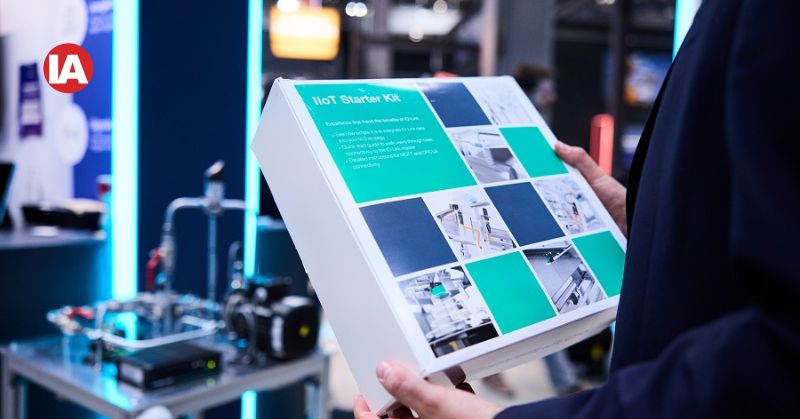
India’s Power Sector: A Balancing Act Between Coal and Renewables
India’s energy sector stands at a critical juncture, balancing the urgent need for reliable, affordable power with its commitment to sustainability. Sharada Prahladrao explores how India can achieve a secure energy future by blending coal, renewables, and emerging low-carbon technologies.
![[object Object]](https://admin.industrialautomationindia.in/storage/articles/article-Yv4POSjeNXpOk4qA4XaUsEo3TJ3TLaB7TCq3QrpL.jpg)
By blending renewable energy with coal and other low-carbon technologies, India can work toward a sustainable and secure energy future for its people, says Sharada Prahladrao.
India’s power sector is undergoing significant transformation to meet the rapidly growing demands of its economy. With accelerated manufacturing, rapid urbanisation, and expanding agricultural activities, the need for a stable, reliable, and sustainable energy supply has never been more urgent. As the country strives to address this need, there has been a notable shift towards renewable energy sources such as solar and wind. However, India faces a challenging paradox: balancing the push for a cleaner, greener energy future with the pressing need to fuel its economic engine, which remains heavily dependent on coal.
The dual challenge
India has ambitious goals for reducing carbon emissions and transitioning towards renewable energy. Also, its economy requires a steady supply of affordable, reliable energy to continue growing. This tension was highlighted at the 2021 UN Climate Summit in Glasgow, where India committed to increasing its non-fossil fuel energy capacity to 500 GW and ensuring that renewables meet 50 percent of its energy needs by 2030. However, nearly halfway through 2025, coal still dominates India’s energy mix.
Dependence on coal
India’s dependence on coal is largely driven by its vital role in powering the industries that fuel the country’s economic expansion. Despite the growing concerns over coal’s environmental impact, coal has several advantages that make it hard for India to abandon. The two most prominent are its abundance and low cost. Coal is readily available domestically, which makes it a reliable energy source that is cheaper compared to many other alternatives.
Coal-fired power plants also provide continuous electricity generation, making them an ideal solution for meeting base load demand. Unlike renewable energy sources, such as solar and wind, which are intermittent, coal can produce electricity around the clock. Until India develops widespread energy storage solutions and grid-stabilising technologies, coal will continue to play a critical role in ensuring energy stability. In its World Energy Outlook report, the IEA stated that coal would remain dominant in India’s energy landscape, with an expected net addition of 60 GW of coal-fired power by 2030.

Snapshot of current and future energy mix
As of January 2025, India’s total installed power capacity stands at 466.26 GW. While the share of renewable energy is growing rapidly, coal still remains the dominant source of electricity generation. The growth of renewable energy, particularly solar power, is notable, with solar capacity increasing from 66.78 GW in 2022-23 to 100.33 GW in 2024-25. Wind energy, which contributes 10.37 percent of total capacity, has also seen moderate growth. Hydropower, on the other hand, has remained relatively stable at 46.97 GW, and nuclear power has grown slightly from 6.78 GW in 2022-23 to 8.18 GW in 2023-24.
Despite these efforts, the share of coal in total electricity generation remains significant. As of 2025, coal accounts for 79 percent of India’s electricity generation, with renewable energy sources still struggling to match coal’s contribution. This reliance on coal is unlikely to change drastically in the near future.
Why coal remains essential
The primary reason for India’s continued dependence on coal is its reliability and economic viability. Coal provides stable, uninterrupted electricity, making it ideal for meeting base-load demand. In contrast, renewable energy sources like solar and wind are intermittent and dependent on weather conditions, which makes them less reliable for steady, large-scale power generation. Until better energy storage solutions and advanced grid management systems are developed, coal is essential for maintaining energy security.
Coal is also economically attractive for India. The country boasts vast domestic coal reserves, making it an inexpensive energy source. Setting up coal-based power plants involves lower upfront costs compared to renewable energy infrastructure, which requires significant capital investment. In addition, large parcels of land are needed for renewable energy projects, something that is in limited supply in densely populated regions.
Conclusion
India’s power sector is at a crossroads. As the country strives to reduce its carbon footprint and transition to cleaner sources of energy, coal continues to play a crucial role in meeting the nation’s growing energy demand. The road to a low-carbon future is fraught with challenges, but with ongoing efforts to develop renewable energy infrastructure and address the logistical, financial, and social barriers to change, India is well-positioned to navigate this complex energy transition. By blending renewable energy with coal and other low-carbon technologies, India can work toward a sustainable and secure energy future for its people.
Article courtesy: ARC Advisory Group
Sharada Prahladrao is the Editor & Public Relations Manager at ARC Advisory Group. Besides editing global research reports she writes Insights, ARCViews and blogs. She has the innate ability to understand complex concepts and express them lucidly. She liaises with the media and contributes articles written by her and ARC colleagues regularly to industrial publications
Prior to joining ARC, Sharada worked as a copywriter for F D Stewart and Clarion Advertising; provided media-related work for CorvoShandwick, a PR firm; and freelanced for local newspapers. She has been involved with two NGOs: integrating children with disabilities into mainstream education and rural education programs. She’s an alumna of Rishi Valley School, Andhra Pradesh and Mount Carmel College, Bangalore.

Pepperl+Fuchs at Hannover Messe 2025: Predictive maintenance solution
Instant digital transformation of industrial plants with maximum flexibility and individual scalability.
The Industrial Internet of Things (IIoT) relies on comprehensive sensor and process data from the field level. At HMI2025, Pepperl+Fuchs, together with Bosch Digital Twins Industries and Syntax, showcased a joint product that demonstrated how easily aggregated data can be transferred to established cloud platforms such as AWS and MS-Azure.
The Digital Twin Starter Kit from Pepperl+Fuchs was shown with this model at the trade fair to simulate a real application. The kit consists of powerful sensors, an IO-Link master, a fanless embedded PC, and all other components required for seamless integration of the hardware.
The IO-Link master serves as the interface between the sensors and the embedded PC for preprocessing and aggregating data from the field level, which is then transferred to the Bosch Digital Twin platform, also known as the Intelligence Core. Using a simulation model, the integrated intelligent asset performance management (IAPM) solution performs real-time data analysis.
The use of ML algorithms and AI allows functions such as prediction of potential failures, optimisation of maintenance schedules, and recommendation of actions. This ensures preventive interventions for trouble-free operation of the production plant.
The starter kit configures itself automatically after connecting to the internet and powering on. The open platform and open communication standards used guarantee maximum flexibility and individual scalability.
The Pepperl+Fuchs Group is one of the leading companies for industrial sensor technology and explosion protection. The headquarters in Mannheim, Germany, represent the core of the company's technical expertise, where engineers and specialists research and develop the latest technologies and products. Originally a small family business founded in 1945, Pepperl+Fuchs is now represented on all continents by more than 40 subsidiaries on 6 continents. Our global presence gives us the best of both worlds: the highest technical standards plus efficient, cost-effective production facilities. Pepperl+Fuchs has developed into a partner for worldwide users of automation technology, and offers the most comprehensive portfolio of tried-and-tested components for the demands of manufacturing automation and process automation.